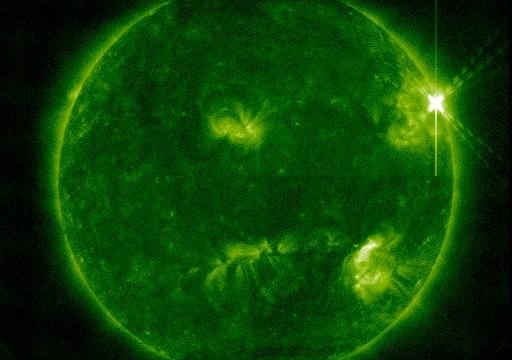The Sun jumped the gun on July 4 celebrations, as a huge solar flare erupted on the morning of July 3. NASA’s Solar Dynamics Observatory captured the outburst.
The flare was an X1.5-class flare. X-class flares are the largest the Sun emits, ahead of A-, B-, C-, and M-class flares. X-class flares are 10 times more energetic than M-class flares, the next one down on the pecking order, and are the largest explosions in our solar system (all respect to the great San Diego fireworks debacle of 2012). The X1.5 moniker means that the flare sat squarely between an X1 and X2 flare in its intensity.
At their most mild, solar flares are invisible to us on Earth, just part of the Sun’s regular chatter of activity. But when they’re more intense — when the Sun’s magnetic fields converge, for example — giant loops of coronal mass ejection many times the size of Earth can bound off the star’s surface. When directed at us, those flares can mess with our satellites and communications systems, even those located on the ground. There’s even evidence that a solar storm during the Vietnam War caused dozens of sea mines to explode.
None of that is a concern with the recent flare, though, which was recorded by the Atmospheric Imaging Assembly telescope on a channel that captures regions of the Sun’s corona, or surface. Swaths of the corona are around 10 million degrees Fahrenheit. Still, the relatively puny fireworks in your neighbourhood likely pose a greater threat than any outbursts from the Sun.
